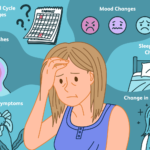
It’s the start of a NEW YEAR … and what was once a routine habit of making New Year’s resolutions has taken on a whole new meaning in 2022 for our Global Community. The tradition of setting aspirations at the beginning of the year, goes back to about 4000 years ago when the ancient Babylonians held a 12-day religious festival to pledge loyalty to their king and make promises to their gods to pay all their debts and return borrowed items. Around 46 BC, in the time of the Emperor Julius Caesar , January became established as the first month of the new year . It was named for Janus, the two-faced god of doorways and archways who looked at both the past and the future. The Romans offered sacrifices to Janus and made promises of good conduct for the coming year. Surveys show that among the most common resolutions made in our time , increasing exercise and healthier living ranks highly and yet there is a struggle to sustain it …so are you ready for some GOOD NEWS? In today’s episode we share some remarkable findings on why the organisms in your gut , your Gut microbiome, could help you build muscle mass ,improve stamina and gain the momentum needed to take your exercise aspirations to the finish line !
The loss of muscle mass as we age is called sarcopenia. It’s considered a natural part of aging that is particularly noticeable after the age of 30 when we can lose between 3 to 5 percent of muscle mass every 10 years and by the time we are in our 70’s, the rate has accelerated ,with an overall loss of 25 to 30 percent . Certainly our lifestyle, hormonal changes, medications and the coexistence of chronic diseases all have an impact on our rate of sarcopenia.
Why are we so concerned with the loss of muscle ? Well the loss of muscle mass and strength are both associated with an increased risk of adverse health outcomes—including the risk of falls ,loss of independence, more frequent hospitalisations and more high-risk surgical procedures.
Falls are the leading cause of injury and accidental death after the age of 65 as reported by the WHO and the CDC and so it’s no surprise that fall prevention strategies are of paramount importance in geriatric healthcare.
In Episode 9 of the podcast, we highlighted the connection between the gut microbiome and the brain- what is referred to as the Gut-Brain Axis. Now we have emerging evidence of a Gut-skeletal muscle axis. In September of 2021, a team lead by Professor John McCarthy from the University of Kentucky , published a study in the Journal of Physiology, in which they showed that a disruption in gut bacteria impairs the ability of skeletal muscle to adapt to exercise. The study was conducted using mice who were either treated with antibiotics or left untreated and voluntarily ran on a weighted wheel for 8 weeks. The mice with the depleted gut microbiome showed less hypertrophy of the muscles in all four limbs and adaptation changes on a cellular level were more pronounced in mice with an intact Gut flora. A similar study was done at Nanyang University in Singapore in 2019 which showed that mice without gut microbes or germ-free mice had weaker skeletal muscles and produced less energy and when gut bacteria was transplanted into these mice there was partial restoration of muscle growth and function with an overall increase in strength. Between 2017 and 2019 at least five additional studies have shown similar conclusions. As all these studies were done on mice, there is always the concern that the same outcomes may not apply to humans.
So what are some of the intriguing findings in humans ? Well, what if we looked at people who ran the Boston Marathon? In 2015 researchers from Harvard University and the Joslin Diabetes Center compared the gut microbiomes of people who ran the Boston Marathon with those of sedentary people. Stool samples were taken from one week before to one week after the 26.2-mile race.
Using DNA sequencing, they found that the amount of a bacterium called Veillonella changed the most before and after the athletes ran. Veillonella can use lactate as an energy source and since our bodies produce lactate during exercise, our ability to metabolise lactate as it is being produced reduces muscle fatigue and increases stamina and endurance. Strains of Veillonella have been injected into mice and shown to increase their running time by an average of 13 percent. In another group of ultramarathon runners and Olympic Trial rowers, the activity of Veillonella genes involved in breaking down lactate increased after exercise.
If our ability to build muscle and develop stamina and endurance is dependent on a healthy gut microbiome, then getting an average of 30 grams of fiber daily from consuming delicious vegetables, fruits, legumes, nuts and whole grains is key to your success… and for those of us who are not professional athletes, staying as active as possible along with focused strength training and feeding those amazing gut organisms could keep us from falling and losing quality of life.
Here’s to FRESH STARTS in 2022 as we continue our journey to becoming heroes of our own health!




